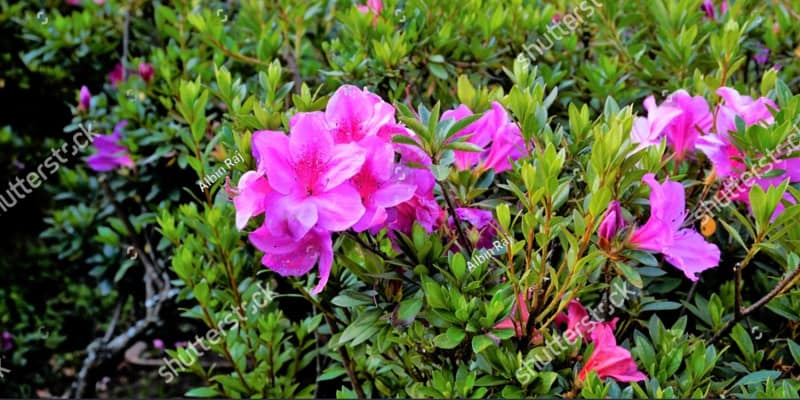
When and how to feed azaleas
Our site is reader supported, this means we may earn a small commission from Amazon and other affiliates when you buy through links on our site.
Azaleas don’t need much looking after and they are generally problem free with the exception of a few pests and diseases as discussed here. However, a shot of fertiliser in the spring sets them up for a good growing season. I also like to give them another feed as the flowers fade as I’ve found it really does help get the most out of them.
When to feed azaleas
I like to fertilise my azaleas both in pots and in the ground in late winter or early spring, and sometimes if I have pruned my azalea after flowering. If you’ve just planted new ones, wait for three or four weeks and then give them some extra fertiliser as I usually add a small handful of fertiliser when planting them anyway.
Apply the fertiliser lightly as too much can burn the plant’s roots which is a common mistake, it’s usually just a good idea to follow the instructions on the container or box.
What to use to fertilise your azaleas

If your soil is acidic enough for your azaleas’ best health, then use a balanced fertiliser. Look for one that’s 15-15-15, which gives equal amounts of nitrogen, phosphorus and potassium. I would recommend testing teh soil PH with a soil testing kit or if growing in pots, make sure you use ericaceous compost. Ideally, you want a pH of 5.1 – 6.0, I have found this to be the sweet spot. If it’s very acidic, maybe add some lime to the soil to raise the pH to above 5.
Alternatively, you may choose to use a fertiliser specially formulated for azaleas and other acidic loving plants. Miracle Gro Azalea, Camellia & Rhododendron Soluble Plant Food is a popular choice I often use. It also contains micronutrients, including iron, manganese and zinc. That being said, any plant food labelled for Azalea, Camellias or rhododendrons will be ideal.
If your soil is not quite the acidic soil that azaleas love, consider using ericaceous compost. This is an acidic compost that helps to adjust the soil to the right pH range. The ericaceous compost you choose should not contain any peat. This is usually only a short term solution and will probably need to be done regularly to keep the soil more acidic. In this case, you might want to consider growing azalea in pots instead.
If your having issues with your azalea leaves turning yellowing and dropping, check out my guide here.
If there are drooping, this guide could help.